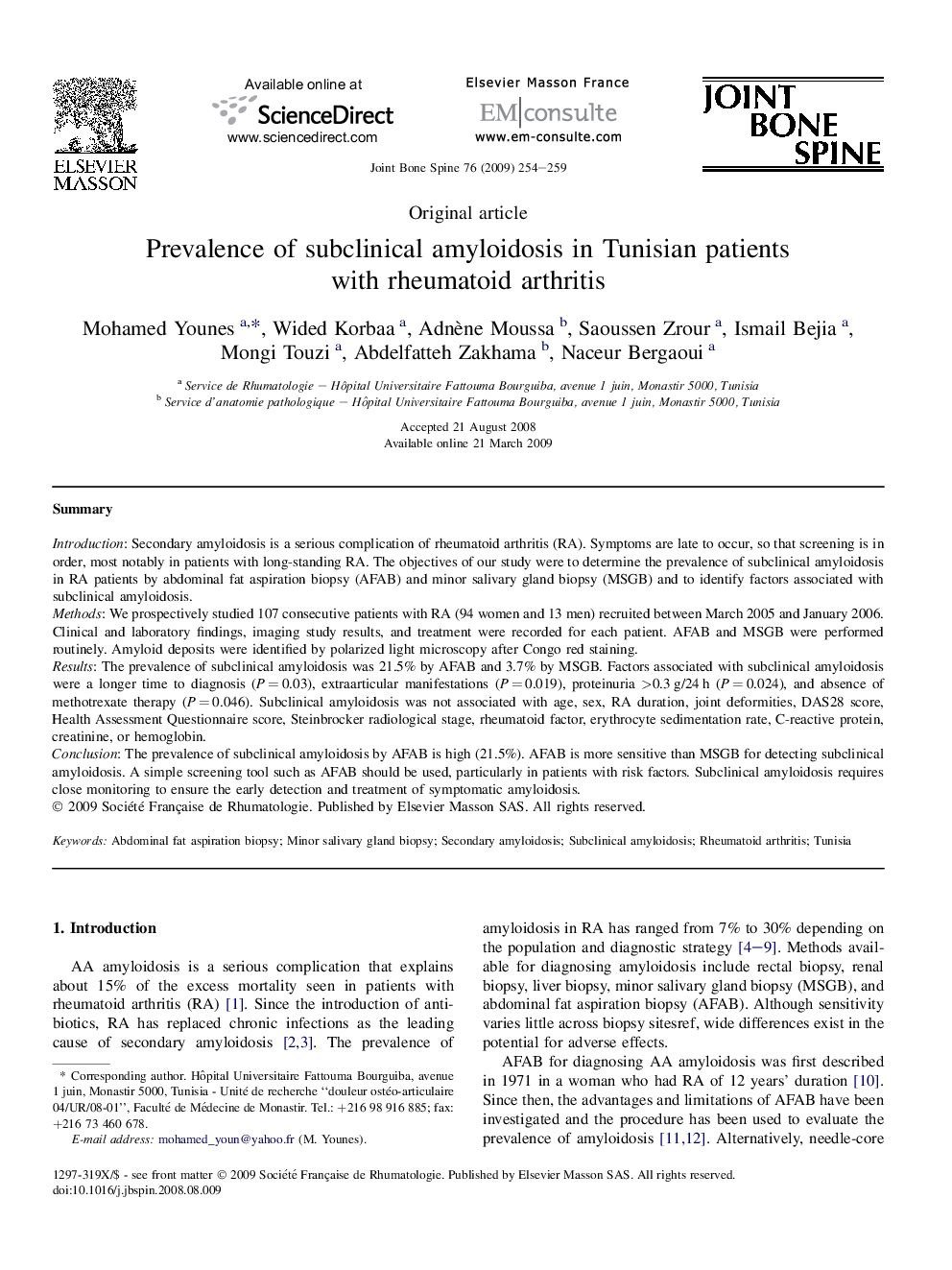| Article ID | Journal | Published Year | Pages | File Type |
|---|---|---|---|---|
| 3366589 | Joint Bone Spine | 2009 | 6 Pages |
SummaryIntroductionSecondary amyloidosis is a serious complication of rheumatoid arthritis (RA). Symptoms are late to occur, so that screening is in order, most notably in patients with long-standing RA. The objectives of our study were to determine the prevalence of subclinical amyloidosis in RA patients by abdominal fat aspiration biopsy (AFAB) and minor salivary gland biopsy (MSGB) and to identify factors associated with subclinical amyloidosis.MethodsWe prospectively studied 107 consecutive patients with RA (94 women and 13 men) recruited between March 2005 and January 2006. Clinical and laboratory findings, imaging study results, and treatment were recorded for each patient. AFAB and MSGB were performed routinely. Amyloid deposits were identified by polarized light microscopy after Congo red staining.ResultsThe prevalence of subclinical amyloidosis was 21.5% by AFAB and 3.7% by MSGB. Factors associated with subclinical amyloidosis were a longer time to diagnosis (P = 0.03), extraarticular manifestations (P = 0.019), proteinuria >0.3 g/24 h (P = 0.024), and absence of methotrexate therapy (P = 0.046). Subclinical amyloidosis was not associated with age, sex, RA duration, joint deformities, DAS28 score, Health Assessment Questionnaire score, Steinbrocker radiological stage, rheumatoid factor, erythrocyte sedimentation rate, C-reactive protein, creatinine, or hemoglobin.ConclusionThe prevalence of subclinical amyloidosis by AFAB is high (21.5%). AFAB is more sensitive than MSGB for detecting subclinical amyloidosis. A simple screening tool such as AFAB should be used, particularly in patients with risk factors. Subclinical amyloidosis requires close monitoring to ensure the early detection and treatment of symptomatic amyloidosis.
